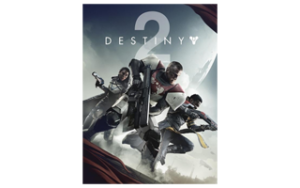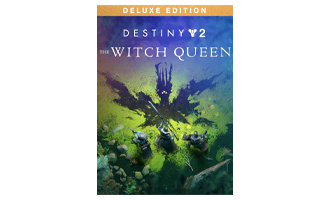A regularly updated review of the new quests, seasons and strikes in Destiny 2.
Destiny 2: The five-year review
While comparisons to Bungie’s other science fiction first-person shooter series were common ahead of the release of the first Destiny in 2014, Destiny 2 has long sinced escape the long shadow cast by Halo and inked a legacy of its own.
Destiny 2 is not only older than the first game in the series was when it was gracefully retired, it’s also bolder. Where the series’ debut sometimes felt like a torn between being the annualized franchise that then-publisher Activision-Blizzard needed Bungie to make and the evergreen experience that the developer actually aspired towards, the sequel more fully realizes this vision.
Five years on from its release, Destiny 2 has dramatically changed.
Over the course of two smaller, post-launch DLCs, four major expansions and a dozen in-game seasons, Bungie’s online first-person looter has grown, shrunk and evolved in too many ways to count.
With the launch of the game’s latest evolution, The Witch Queen, it’s worth taking stock of just how far Destiny 2 has come since launch.
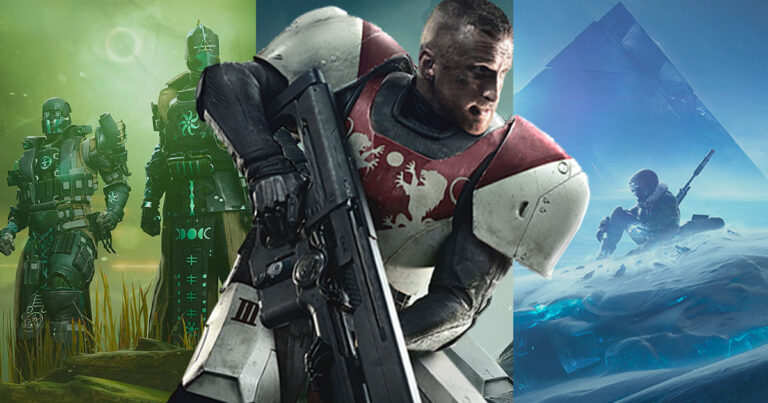
Understanding Destiny 2
Destiny 2 is a multiplayer-focused first person shooter with MMORPG-like storytelling and loot-driven progression.
Like the first game in the series, the sequel to 2014's Destiny is something of a hybrid when it comes to genre. The moment-to-moment gameplay and science fiction setting has some similarities to Bungie’s Halo series, but the world-driven storytelling, loot driven progression and emphasis on social play in the game skews much closer to that of MMORPGs like World of Warcraft and Final Fantasy XIV.
In Destiny 2, players create an avatar that falls into one of three classes: Hunter, Titan or Warlock. Each of these three archetypes brings a set of unique movement and combat abilities to the table. For example, the Hunter can summon a mystical revolver in a pinch while the Warlock can unleash torrents of lightning from his hands.
Once they’ve created their character, they’re then thrust into the midst of the sprawling science fiction saga that Bungie have created and left to their own devices. Like many MMORPGs, Destiny 2 is a game that can kind of be whatever you want it to be. Whether you stick to completing story content or dive into the game’s competitive multiplayer modes, your character will gradually grow in both power and prestige while unlocking new and more powerful weaponry.
While Destiny 2 was originally a retail release, the game shifted to free-to-play in 2019. At the time, this change gave new players access to the game’s base campaign (also known as “The Red War”) plus the Curse of Osiris and Warmind downloadable content packs.
Later expansions for the game like Forsaken and Shadowkeep still had to be bought seperately, but this baseline experience still represented dozens of hours of free gameplay.
However, in 2020, Bungie made the controversial choice to begin implementing what it called the Destiny Content Vault. This restructuring of the content in the game retired older campaigns, quests, weapons and even entire planets from the game’s ecosystem to make way for new ones.
While this change did make it easier for newer players to catch up to the story being told in more recent expansions and in-game seasons for Destiny 2, it also significantly reduced the generosity of Destiny 2’s free-to-play offering and made following the series’ already-convoluted storytelling even trickier to follow.
At the time of writing, Destiny 2 is itself free to play while major expansions like Shadowkeep, Beyond Light and The Witch Queen have to be bought separately.
Between major expansions, Destiny 2 also operates on a season pass system similar to other live-service games like Fortnite. Each season includes some free content, but Bungie tends to keep the most substantial seasonal additions gated behind the paid version of the season pass.
Destiny vs Warframe vs Borderlands vs Halo
With its distinct blend of first person shooter and massively multiplayer online roleplaying elements and an ambitious approach to storytelling that spans years rather than hours, Destiny 2 is, in some respects, unlike anything other game out there.
It’s certainly a big breakaway from the science fiction saga that Bungie built its reputation on. Where Halo split its single player campaign and competitive multiplayer represented two sides of the same coin, Destiny frames each as part of a larger, blurrier, whole.
The saga of Destiny doesn’t so much follow any single character as it does the state of the world around them. Where Halo followed the exploits of a singular, canonical protagonist, Destiny tries to empower players to forge their own smaller and individual stories within an ever-evolving world.
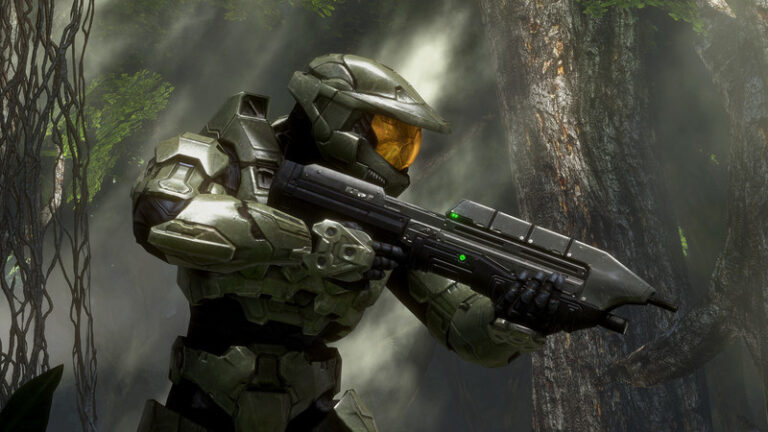
That’s not to say there’s zero common ground here.
Put Halo and Destiny side-by-side and you’ll pick up on the heavy emphasis on gunplay fairly quickly. The two franchises are also both equally interested in a lot of the same science fiction tropes, featuring exotic locations, ancient megastructures and an interest in depicting what a future where humans are forced into contact or conflict with alien civilisations and cultures could look like.
Of course, no game exists in a vacuum. Looking beyond Halo, it’s hard not to see parallels between the genre-jumping gameplay of Destiny and another popular loot-driven shooter: Borderlands.
Released in 2009, the first Borderlands was praised for its fusion of Diablo-inspired loot hunting, co-op friendly multiplayer and satisfying first-person combat.
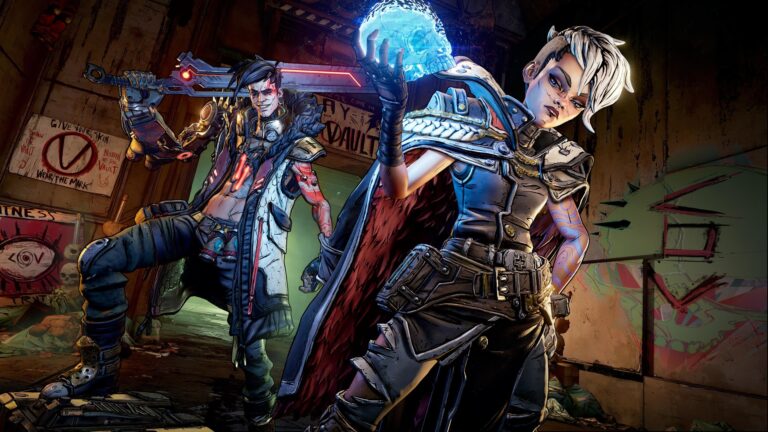
Gearbox’s “first person looter” franchise has a lot in common with Destiny, but a number of key differences exist between the two.
Even in more recent installments of the series, Borderlands has kept things fairly simple and traditional when it comes to structure. In contrast to Destiny’s ever-evolving world, each Borderlands game ships with a linear campaign that can be replayed with friends or at higher difficulty levels, plus a few pieces of downloadable content.
Borderlands also eschews almost any room for competitive player-versus-player modes like that found in Destiny and caps out at 4-players when it comes to cooperative activities.
Even if there’s plenty to like about Borderlands’ lighter tone and more conventional approach to the loot shooter genre, the choice to play things safe when it comes to structure sets it apart from Bungie’s game in ways both big and small.
For that reason, and especially with the game’s shift to free-to-play in 2019, there’s no more obvious competitor to Destiny 2 than Warframe.
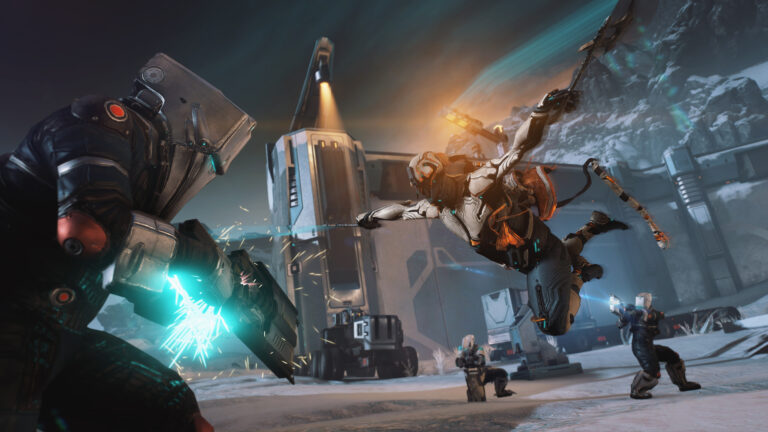
While Warframe opts for an over-the-shoulder third-person perspective and offers up a very flavor of science fiction storytelling, the two titles overlap when it comes to their broader live-service ambitions.
The one big difference between the two is that Warframe has been free-to-play right from the start.
Digital Extremes’ space ninja looter-shooter relies on a very different monetisation model to that of Destiny 2. The core game is free. So is each major update for it. Instead of making money via season passes of expansion packs, Warframe is entirely monetised through an in-game store that can be used to purchase new weapons and classes using real-world money.
Over time, Warframe’s age has become one of its biggest advantages. In sharp contrast to the vaulting of older content seen with Destiny 2, Warframe offers free-to-players access to everything in the base game, plus all eleven major content updates . That generosity translates into an enormous amount of gameplay diversity without it costing a cent.
The road to Year 6 and beyond
Among fans, it’s something of a recurring joke whether or not Destiny 2 is in a good place from month to month. As Bungie continues to tinker with the gameplay balance and various progression systems in the game, the reception from fans can swing wildly from enthusiasm to angst.
While the launch of Destiny 2 saw the game garner praise for the strengths of its single-player campaign, it didn’t take long for the cracks in the endgame to show. Both reviewers and the game’s hardcore fanbase raised a number of concerns around the lack of variety in PVE content and the lack of balance in PVP. At this time, Destiny 2 featured just six strikes and a dozen PVP Crucible maps.
While Bungie was quick to roll out the game’s first six-player raid encounter, this early era of Destiny 2 suffered from frustrating changes made to the game’s weapon and loot systems.
As a result, several months after the launch of Destiny 2, Bungie issued a comprehensive blog post formally responding to this feedback. At that time, the developer explained that future systems, features, and updates were being designed specifically to support players who want Destiny to be their hobby as opposed to a game that they play once and then put down until the next one rolls around.
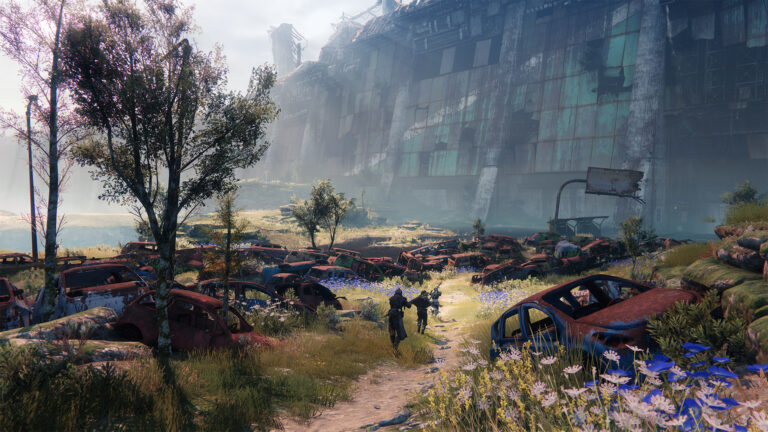
In the years since this declaration, Bungie have made strong strides when it comes to growing the depth and breadth of gameplay experiences that Destiny 2 offers for both hardcore and casual audience.
While the first two downloadable content packs for the game - Warmind and Curse of Osiris - were not particularly well received, they did go some way towards addressing some of the issues faced by Destiny 2 at the time. Together, they added two new locations to the game’s stable of open world maps alongside a much-needed injection of new Crucible content and PVE-focused Strikes.
Forsaken, the first major expansion pack for Destiny 2, took things even further in this direction. On top of offering a substantial story campaign that many fans believe set a new gold standard for the series, it also included two new zones, two new Strikes, plus a new endgame raid.
In addition, Forsaken threw a fifth new faction of alien adversaries into the mix in the form of the Scorned and introduced a new hybrid PVP/PVE gameplay mode called Gambit.
Following the release of Forsaken, Bungie moved to launch Destiny’s first season pass.
Rather than sell smaller but discrete content packs to fill the game between major expansions, Destiny 2 players would now have access to new activities, loot and storylines told over a longer period of time. This approach proved popular, forming the basis for the season pass found in the game today.
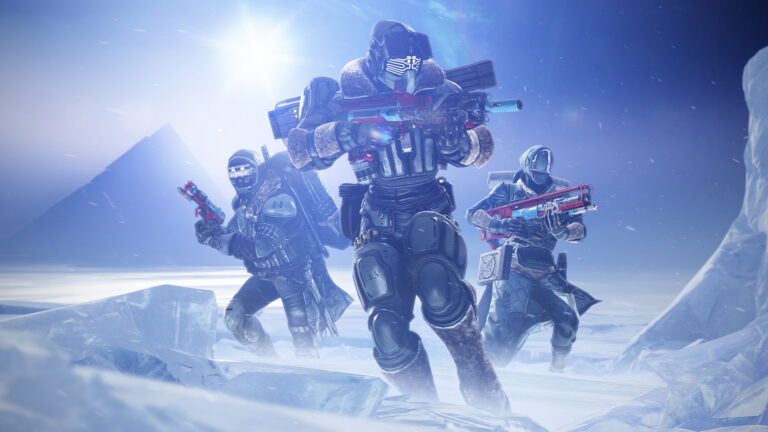
Released following their split with publisher Activision-Blizzard in 2019, Shadowkeep was something of a new beginning for Destiny 2.
The second major expansion for Destiny 2 added a new location to the game in the form of the Moon, two new Strikes, three new PVP maps and several hours of new story content that led players right into the revamped season pass for the game.
The release of Shadowkeep also coincided with the shift of the game from paid to free-to-play, firmly tilting the emphasis on Destiny 2 as a game buoyed by big releases to one that keeps players interested with smaller but more regular updates.
The release of Destiny 2’s third major expansion, Beyond Light, in 2020 leaned even harder in this direction. Beyond Light added a new location to the game in the form of Europa alongside two new Strikes. It also shook up the status quo for longtime Destiny players by introducing new Stasis elemental powers and, in a series first, took content out of the game.
This practice of “vaulting” content has continued to be divisive in the years since, with Forsaken the latest expansion to be pulled ahead of Destiny 2: The Witch Queen in 2022.
At the time of writing, Bungie has said it plans to release two more major expansions for Destiny 2(alongside regular seasonal updates for the game) as it gears up to conclude the series’ major ongoing plot threads.
The first of these, Destiny 2: Lightfall, is expected to launch in early 2023.
Following this, the developer says that it is planning to conclude “The Light and Darkness Saga” with Destiny 2: The Final Shape in 2024.
How Destiny 2 ranks in 2022
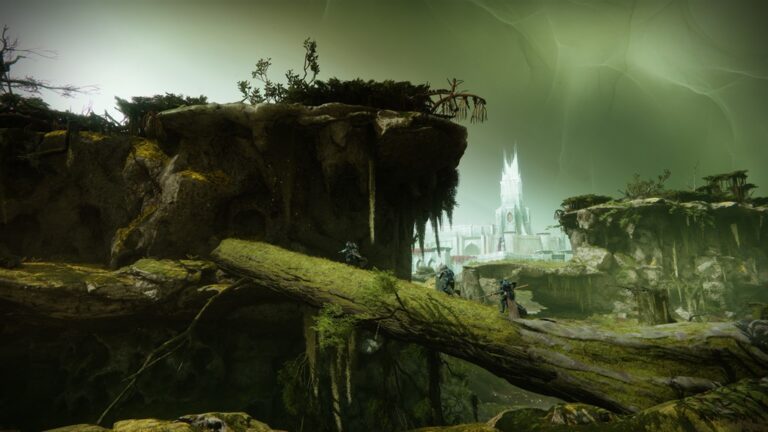
Destiny 2 might not have become the science fiction counterpart to Call of Duty that Destiny publisher Activision-Blizzard hoped it would, but the series has gone on to forge a legacy that’s arguably much more compelling than that scenario ever would have been.
Even if Bungie hasn’t always succeeded when it comes to making Destiny 2 the game that it could be, they’ve hit the mark enough that fans continue to stick around and find out where the series is going to go next.
A focus on PVE content and live service storytelling sets Destiny 2 apart from many other online shooters, and while the slower pace involved can make keeping up with the game feel like a bit of a chore, Bungie are good at making it easy for lapsed players to catch up whenever they decide they want to make the time for it.
When is Destiny 3 coming out?
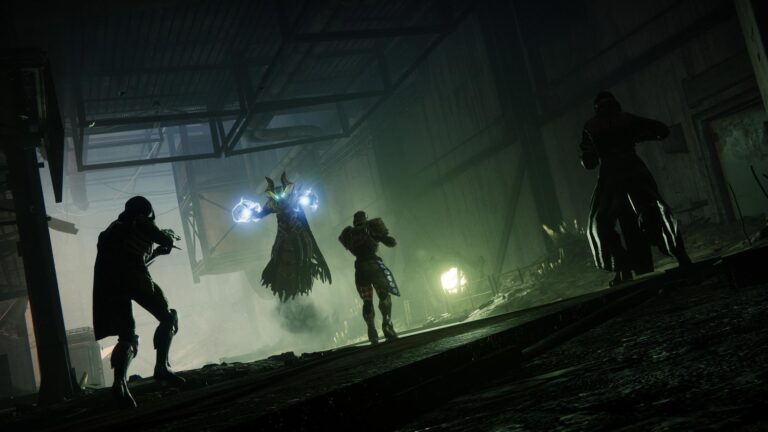
At this point, whether or not a Destiny 3 happens is hard to say.
The many cryptic comments that Bungie have issued when it comes to the arrival of Destiny 2: The Final Shape in 2024 are certain to inspire speculation about the future of the franchise.
However, the developer has insisted that the culmination of the series’ years-long storyline will represent a “transformative moment” for the game rather than a definite conclusion.
Given the number of updates and investment that Bungie have made in Destiny 2 as a platform for the continuation of the franchise, it’s unclear if the development of a more-straightforward sequel makes more financial sense than continuing to offer new seasonal content and major expansions for the game that has already been developed.
The acquisition of Bungie by Sony in 2022 has complicated this even further. We'll have to wait and see.
Do I need to play Destiny 1 before Destiny 2?
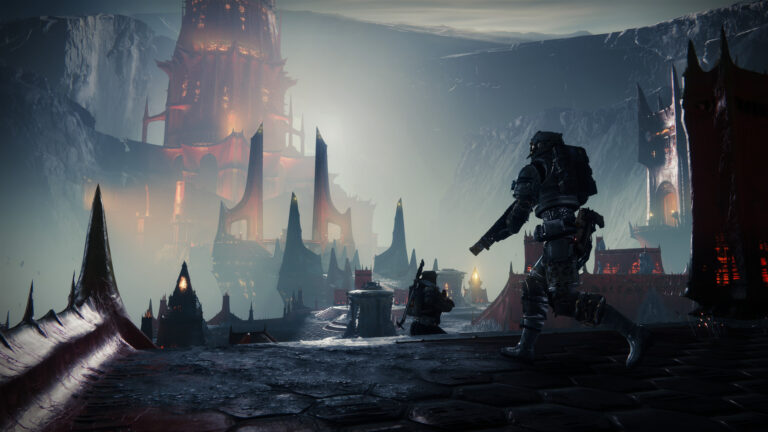
While many of the storylines, locations and characters in Destiny 2 have roots that stretch back to the first game in the series, it's not strictly necessary to play it before jumping into the sequel nor is it recommended.
Although characters created in the first game can be imported over into Destiny 2, the consequences of this transplanting are strictly cosmetic. None of your weapons or progress carries over from one game into the other.
In addition, Destiny 2 has a number of quality of life updates that make it a little easier to start playing than the original game. While lore hounds looking to see as much of what the science fiction shooter franchise has to offer may find it fruitful to return to the first game in series, most are going to be just fine starting with the sequel.
Related Articles



